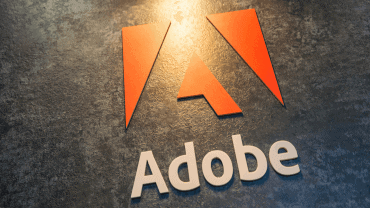
While there are significant benefits to multi-cloud deployments, they also bring their own set of challenges. The right enterprise infrastructure is essential to making the transition to a multi-cloud environment much more manageable. This is where a flexible, real-time infrastructure that not only handles data distribution but also ensures compliance with evolving regulations is key to unlocking the full potential of a multi-cloud approach.
The latest wave of disruptions across major cloud platforms such as Microsoft Azure and AWS have served as a severe wake-up call on the risks of depending on a single cloud provider. From travel bookings to healthcare appointments, the impact of recent cloud outages has been widespread across global operations. Organizations of all sizes are now realizing that a multi-cloud approach is essential to thrive in today’s interconnected world – and the value of a multi-cloud strategy extends well beyond just mitigating the risks of vendor dependency to bringing new business value.
But adopting a multi-cloud strategy is not as simple as switching a destination address on a parcel. While there are significant benefits to multi-cloud deployments, they also bring their own set of challenges. The right enterprise infrastructure is essential to making the transition to a multi-cloud environment much more manageable. This is where a flexible, real-time infrastructure that not only handles data distribution but also ensures compliance with evolving regulations is key to unlocking the full potential of a multi-cloud approach.
The shackles of vendor lock-ins are coming looser
Already, we have the basics for multi-cloud in place. There is now a healthy market of cloud offerings thanks to the multiple hyperscalers, with regulators further encouraging competition amongst them. Just this year, AWS announced that it will allow customers to transfer their data out of its ecosystem to another cloud provider with no fees imposed. Shortly after, Google announced similar plans for data transfer outside of GCP, with Microsoft now expected to lay out an approach for Azure.
These decisions follow provisions set out in the European Data Act, which came into force in January and was designed to promote competition by allowing cloud customers to switch providers more easily. Eliminating egress fees for data transfers to other cloud providers is a positive step towards open cloud ecosystems, aligning perfectly with the EU and UK regulations pushing for greater interoperability.
While it’s clear big moves are being made by large cloud providers, becoming truly multi-cloud will require bodies such as the CMA or EU in a GDPR-like format to really make a wave in the industry and help remove vendor lock-ins. There are no immediate plans in place, but businesses must make sure they are ready to react quickly to ensure they benefit from the cost and flexibility advantages.
24/7 businesses without fault tolerance leave themselves vulnerable
Cloud outages have only highlighted the vulnerability of one cloud deployment. Even the largest cloud hosts – Google, AWS, Microsoft – suffer from outages, and having all your digital eggs in one cloud basket leaves businesses at risk of serious failure. It’s about building a fault tolerance, a buffer that enables your business to always remain operational. It will come down to how the workload is transferred or handled by another cloud provider.
Concerns about outages shuttering business operations are for good reason, with Oxford Economics calculating that downtime costs Global 2000 companies $400 billion each year, with each hour costing the business an average of $540,000.
The implications are huge. Take the recent CrowdStrike outage as an example that affected organizations such as financial services, airlines & operators, and healthcare organizations that rely on being operational 24/7. It highlighted the general IT dependency today’s businesses have, but if we dig a little deeper, then we see the impact of cloud-specific outages.
A wake-up call for cloud dependency
Large global businesses need to be accessible for customers no matter the time of day. Consider the Australian industry fund, UniSuper, when Google Cloud accidentally deleted the private cloud account of the Australian pension fund worth $125 billion. It left over half a million users without access to their accounts for a week – a fiasco that was only resolved by a single backup on another cloud provider, but the outage duration could have been minimized completely if it was truly multi-cloud all the time.
When a business is multi-cloud, the end user should never even be able to detect that a failure has occurred within the business. Any service downtime is avoided, as the failing is shielded by another cloud host. It’s this level of availability that remains at large a driver for multi-cloud deployment – if one server fails, businesses need the assurance that another cloud server will automatically pick up the slack and ensure the business itself is not adversely affected.
For many, multi-cloud is a plan for the future, with 97% of IT leaders intending to expand their cloud systems further by using one or more clouds in their systems. But currently, too many businesses are preoccupied at the first hurdle – setting up their first cloud deployment. Only when businesses have this first adoption in place do they want to focus on ensuring apps are friendly at the multi-cloud deployment level. This is how the risk exposure begins.
In a perfect storm, all clouds would be the same, and shifting masses of information, data, and workloads from one cloud provider to another may be a simple endeavor. But the reality is much different. Large-scale organizations have various barriers to overcome when deploying tech stacks across multiple platforms. As explained by Gartner, there are nuances when it comes to features offered by each provider, such as the operating system, programming language, etc., and they range from minor to almost complete rewrites of the code.
The next challenge comes with ensuring the applications within the various clouds can “talk” to each other to ensure the seamless exchange of information. The solution lies in the underlying architecture that can seamlessly connect these different cloud providers together and enable the transfer of data in real time.
Enter the event mesh.
The importance of mesh interoperability to support shifting workloads
Between dealing with regulatory compliance changes and avoiding single provider lock-ins, many organizations have had no choice but to rethink their IT infrastructures and adapt to the complications of global operations. Being able to connect data in motion between various clouds and in real-time is a non-negotiable for global enterprises, and it’s where an event mesh can provide the interoperability businesses desperately need.
Within an event mesh, every transaction, business moment, or piece of data is an event – no matter where and no matter what cloud the user is operating on. Businesses using an event-driven architecture have a powerful built-in event mesh that addresses this same challenge of “data in motion” by spanning all clouds and even on-prem locations as one seamless data movement layer.
That means that these businesses can now dynamically shift workloads across clouds by leveraging even relatively small and short-lived differences in separate cloud packaging, pricing, and performance advantages. Supported by its global deployment of event brokers within the event mesh, businesses can be confident that their underlying tech stack ensures a multi-region, multi-cloud agnostic approach.
See also: Unlocking Real-time Insights: The Power of Messaging and Event-driven Architecture
Not all services are created equal; understand which ones out-compete the rest
With today’s demanding consumer expectations around responsiveness and availability, the businesses that are the most responsive and available will out-compete the businesses that are not. A multi-cloud approach keeps them agile and available, even when it comes to operating in multiple regions.
For example, some applications will perform better across different clouds, so choose cloud deployments that are suitable for simple data storage versus those suitable for heavy AI-dependent apps. Some, of course, won’t work at all in geographic regions where sovereign data rules may apply. Having a multi-cloud approach will allow organizations to pick and mix according to their business needs, which in turn creates added flexibility for workload placement. For instance, allowing businesses to move applications to the lowest-cost environment and build leverage for when it’s time for cloud contract negotiations.
The benefits of multi-cloud go one step further when trying to ensure best-of-breed cloud deployments for applications. It’s key to remember that although cloud operators all offer services in the cloud, not all services are equal in what they offer. By not locking in with a single vendor, organizations can arbitrage cloud services to get the best service for individual business needs. Being able to access the latest new technologies not only makes innovating easier but allows organizations to take advantage of promotional, merchandising, or product search capabilities from hyperscalers that, in turn, can accelerate revenue for the business.
The move to multi-cloud environments is within touching distance
Large-scale IT failures continue to highlight the urgent need for companies to be better prepared and ready for unexpected regulatory changes. Hyperscalers now provide a more open marketplace for their services, giving businesses the flexibility to select and combine cloud offerings. This enables businesses to move applications to more cost-effective or suitable environments, which helps them achieve their desired business outcomes.
With the support of an underlying event mesh, businesses can be confident that their multi-cloud deployments facilitate seamless, real-time data exchange. This ensures continuity even if one cloud provider experiences an outage. Ultimately, multi-cloud ensures that operations remain constantly available, which is essential for businesses in today’s interconnected world.





























